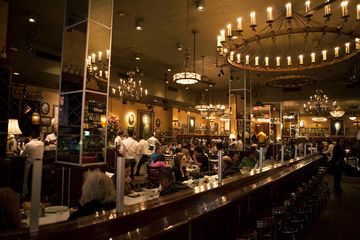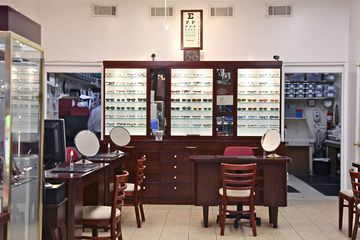When I spoke with Funeral Director Charles Salomon at the Riverside Memorial Chapel next door, I did not know the extent of his talents. It was not until I engaged in a phone conversation with Nicholas Manousos, the Vice President of the Horological Society, that I learned that Charles is adept at making and repairing clocks. He even fixed the ancient grandfather clock in the lobby of the Chapel where the society meets each month. Charles has acted as the Treasurer of the Society for many years and helped out when it was down on its luck in the eighties by offering a free place to meet, saving the members a lot of money in paying for hotel meeting rooms. “He got us through a dark period,” Nicholas told me.
Nicholas shared that the Society has been through a series of different “periods” and stages. On February 26th in 1866, a group of German émigrés who worked as watchmakers all met in a tavern. They formed the Horological Society of New York, though at the time their name and their meetings were conducted in German. “Horological” is a rather general term that means “relating to the study of time,” but in the late nineteenth century, the Society was specifically dedicated to providing a guild or union for watchmakers in the city. There were no big brand watchmakers at the time, so independent businessmen used the society to network and support one another.
Nicholas went on to tell me that around the time of World War I, the Society switched its primary language to English and members started joining from more varied backgrounds. Slowly, the group grew to include not just watchmakers, but also enthusiastic collectors and hobbyists. The Society expanded and flourished until the 1970s, when the “Quartz Crisis” occurred. Quartz watches, which are cheap to make, started replacing mechanical watches. The new watch technology essentially destroyed the watch industry in the United States, Nicholas told me, adding that all U.S.-based watch companies went out of business or were sold to foreign companies. During this period, from the 70s to the 90s, the Society was in decline.
The story, however, has a happy ending. “In the last decade, mechanical watches have had a resurgence,” Nicholas told me. There are now lots of watchmakers in New York and the Society’s meetings, which are open to the public, attract much larger crowds. Nicholas hypothesizes that people want to “go back to something mechanical, which has more of a sense of quality and longevity.” The members come from all walks of life - from boutique owners to auctioneers to journalists to collectors. There are still, of course, many watchmakers among the group. Nicholas admitted that though there are older members and reasonably young members, there are very few middle-aged members, since the Quartz Crisis prevented an entire generation of watchmakers and time-keeper enthusiasts from existing.
Nicholas is on the younger side of the scale. He is in his thirties and worked in the tech industry on the West Coast for fifteen years before deciding to do something different. He shared with me that he has always loved puzzles and engineering, and so he jumped on the opportunity to go to watchmaking school in Miami, Florida. The watchmaking schools, which are often sponsored by a large watch company (Nicholas went to Swatch), are essentially free, since watchmakers are in high demand. He then moved to New York with his wife, and is very happy he did so. He continued on to say that watchmaking can be a lonely profession but that the Horological Society provides an opportunity to be with others and share interests. Though the Society is one-of-a-kind, Nicholas pointed out that a national version exists – The America Watchmakers-Clockmakers’ Institute was in part formed thanks to the Horological Society of New York.
Membership is not a requirement when it comes to experiencing the services that the Horological Society provides. Hidden within Riverside Memorial Chapel, for example, the group has rare horological texts dating back to the 1700s. Nicholas informed me that the library was lost for two decades but was located, re-catalogued, and opened to the public. In addition to the monthly meetings, there are free lectures for anyone interested. Nicholas invited me to the next event that would feature a talk on the idea of “leap seconds,” a concept related to “leap years.” Additionally, the Society has been teaching watchmaking classes to the public since the 1950s. There is a long wait list, but Nicholas assured me that the only barrier to acceptance is space: The Society will help out any willing student with the cost of the class. The Horological Society only asks that its members and guests show an interest in timekeepers and the study of time.

